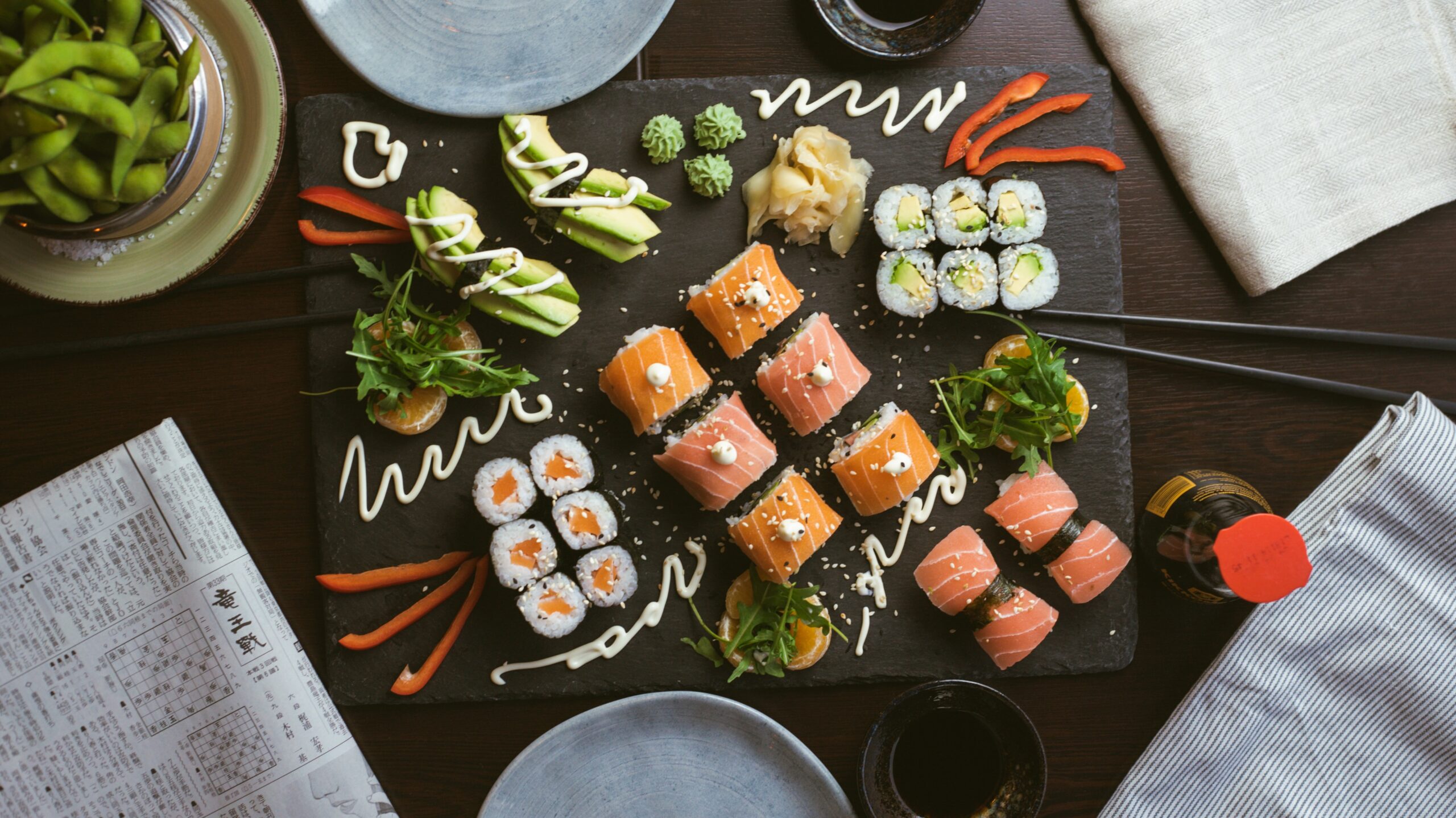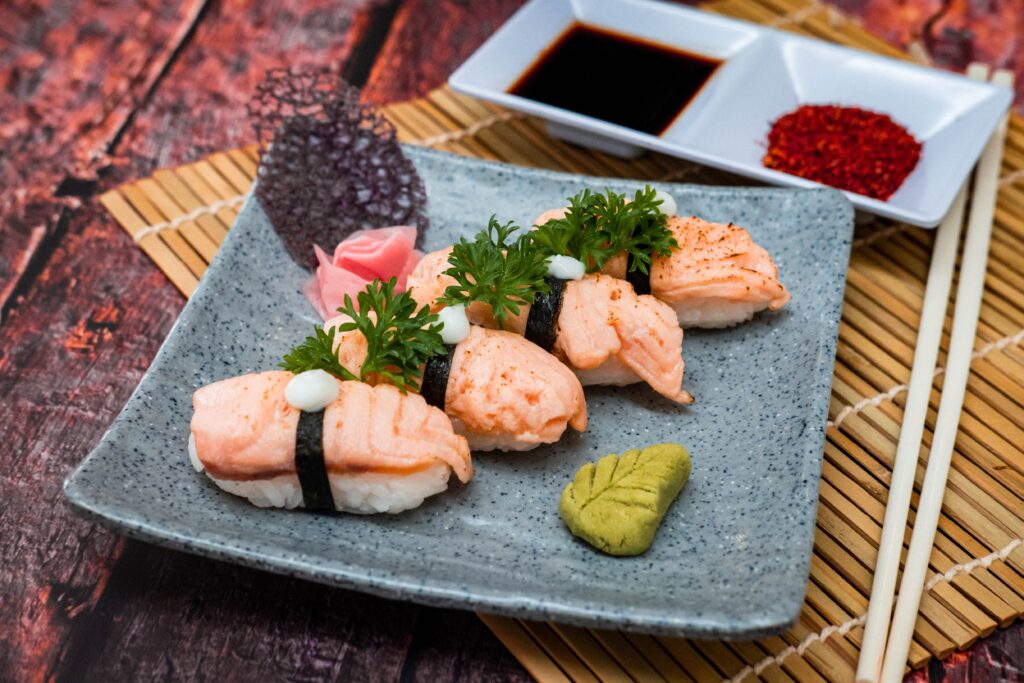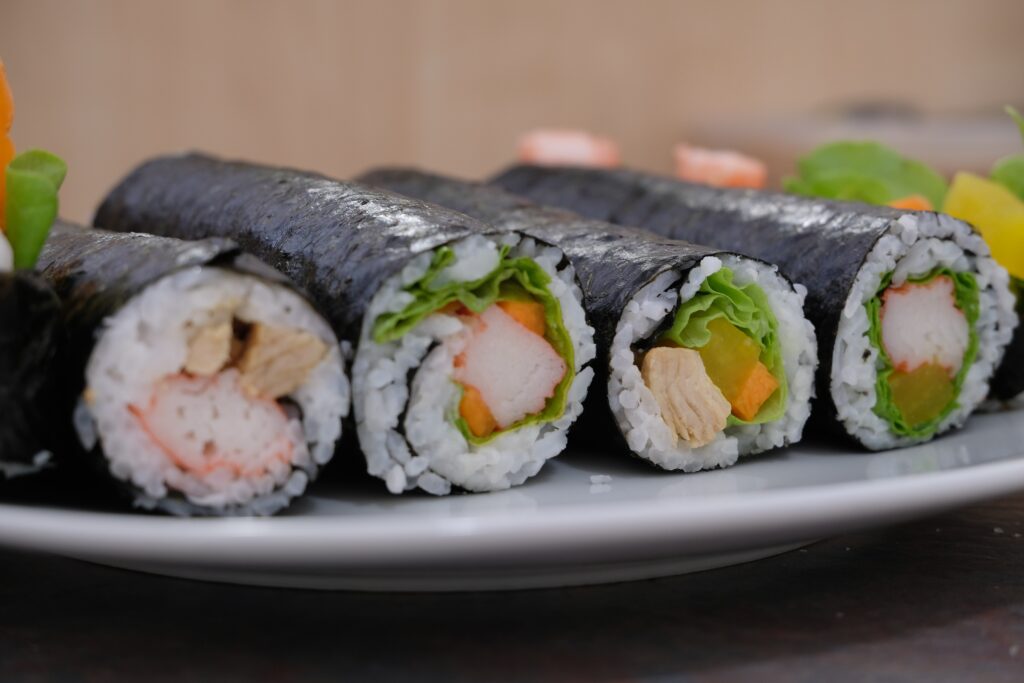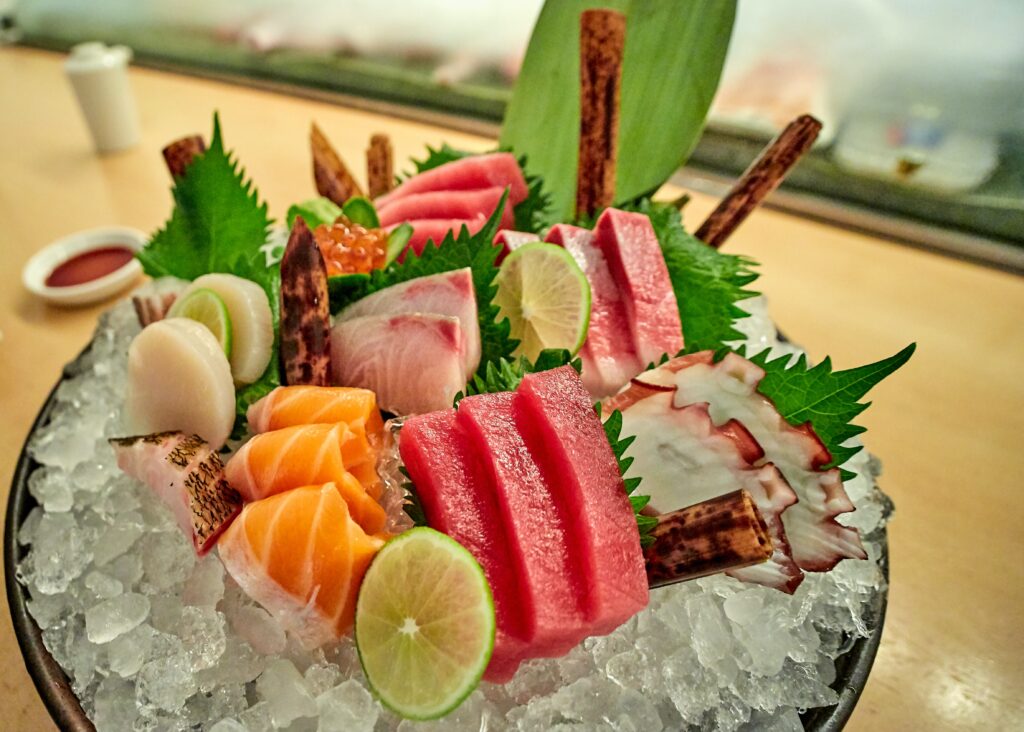Sushi: Food Of Japan
Recently updated on January 17, 2025
Total words: 2334

Table of Contents
- Exploring the Different Types of Sushi: A Guide to the Most Popular Varieties
- The History of Sushi: How This Ancient Japanese Dish Became a Global Phenomenon
- The Art of Making Sushi: A Step-by-Step Guide to Crafting Delicious Sushi Rolls
- The Health Benefits of Eating Sushi: Why This Japanese Dish Is Good for You
- The Best Sushi Restaurants Around the World: A Guide to the Most Delicious Sushi Experiences
Introduction
Sushi is a traditional Japanese dish that has become a global phenomenon. It is a type of food that is made with vinegared rice, combined with a variety of ingredients such as seafood, vegetables, and sometimes even fruits. Sushi is a popular dish in Japan, and it is now enjoyed around the world. It is a healthy and delicious meal that is easy to make and can be enjoyed in a variety of ways. Sushi is a great way to experience the flavors of Japan and to enjoy a unique and flavorful meal.
Exploring the Different Types of Sushi: A Guide to the Most Popular Varieties
Welcome to the wonderful world of sushi! Whether you’re a sushi novice or a seasoned connoisseur, there’s something for everyone when it comes to this delicious Japanese cuisine. From the classic California roll to the more adventurous unagi, there’s a sushi variety to suit every taste.
Let’s take a look at some of the most popular types of sushi.
Nigiri: This is the classic sushi dish, consisting of a slice of raw fish (usually tuna, salmon, or eel) served on top of a small mound of vinegared rice. It’s usually served with a dab of wasabi and a sprinkle of soy sauce.

Maki: Maki is the most common type of sushi roll. It’s made with a sheet of nori (seaweed) wrapped around a filling of vinegared rice, vegetables, and raw fish. Popular varieties include the California roll, the Philadelphia roll, and the spicy tuna roll.

Temaki: Temaki is a type of hand roll, made with a cone-shaped sheet of nori filled with vinegared rice, vegetables, and raw fish. It’s usually served with a dab of wasabi and a sprinkle of soy sauce.
Uramaki: Uramaki is a type of inside-out roll, made with a sheet of nori wrapped around a filling of vinegared rice, vegetables, and raw fish. The nori is then covered with a layer of sesame seeds or tobiko (flying fish roe). Popular varieties include the California roll and the spicy tuna roll.
Unagi: Unagi is a type of eel sushi, made with grilled eel served on top of a small mound of vinegared rice. It’s usually served with a dab of wasabi and a sprinkle of soy sauce.
Sashimi: Sashimi is a type of raw fish dish, made with thinly sliced pieces of raw fish served on top of a small mound of vinegared rice. It’s usually served with a dab of wasabi and a sprinkle of soy sauce.

So there you have it – a quick guide to the most popular types of sushi. Whether you’re looking for something classic or something a little more adventurous, there’s a sushi variety to suit every taste. Bon appetit!
The History of Sushi: How This Ancient Japanese Dish Became a Global Phenomenon
Sushi is one of the most beloved dishes in the world, and it’s no wonder why! This ancient Japanese dish has been around for centuries, and it’s only grown in popularity over the years. But how did sushi become such a global phenomenon? Let’s take a look at the history of sushi and how it’s become a beloved dish around the world.
The origins of sushi can be traced back to ancient Japan, where it was first created as a way to preserve fish. Fish was salted and then wrapped in fermented rice, which helped to keep it fresh for longer periods of time. This method of preservation was known as nare-zushi, and it was a popular way to store fish in Japan for centuries.
In the 19th century, sushi began to evolve into the dish we know today. A man named Hanaya Yohei is credited with creating the first “fast food” version of sushi, which was served at his Tokyo restaurant. This version of sushi was made with fresh fish and vinegared rice, and it was served quickly and conveniently. This new style of sushi quickly became popular, and it spread throughout Japan and beyond.
In the 1950s, sushi began to gain popularity in the United States. Japanese immigrants brought the dish to the US, and it quickly became a favorite among Americans. Today, sushi is a beloved dish around the world, and it’s served in restaurants and homes alike.
Sushi has come a long way since its humble beginnings in ancient Japan. It’s now a beloved dish around the world, and it’s only grown in popularity over the years. From its origins as a way to preserve fish to its current status as a global phenomenon, sushi is a dish that’s here to stay!
The Art of Making Sushi: A Step-by-Step Guide to Crafting Delicious Sushi Rolls
Welcome to the wonderful world of sushi-making! Whether you’re a sushi novice or a seasoned pro, this step-by-step guide will help you craft delicious sushi rolls that will impress your friends and family.
Step 1: Gather Your Ingredients
The first step to making sushi is to gather all the ingredients you’ll need. This includes sushi rice, nori (seaweed sheets), fillings (such as fish, vegetables, and other proteins), and any condiments or sauces you’d like to use.
Step 2: Prepare the Rice
Once you have all your ingredients, it’s time to prepare the sushi rice. Start by rinsing the rice in cold water until the water runs clear. Then, cook the rice according to the instructions on the package. Once the rice is cooked, transfer it to a large bowl and let it cool for about 10 minutes.
Step 3: Add the Vinegar
Once the rice has cooled, it’s time to add the vinegar. This will give the sushi its signature flavor. To do this, mix together 1/3 cup of rice vinegar, 1 tablespoon of sugar, and 1 teaspoon of salt. Then, pour the mixture over the rice and mix it in with a wooden spoon.
Step 4: Assemble the Sushi
Now it’s time to assemble the sushi. Start by laying a sheet of nori on a bamboo mat. Then, spread the sushi rice over the nori, leaving a 1-inch border around the edges. Next, add your fillings in a line down the center of the rice. Finally, roll the sushi up using the bamboo mat.
Step 5: Cut the Sushi
Once the sushi is rolled up, it’s time to cut it into pieces. To do this, use a sharp knife and cut the sushi into 8 equal pieces.
Step 6: Serve and Enjoy!
Now that your sushi is ready, it’s time to serve and enjoy! Serve the sushi with soy sauce, wasabi, and pickled ginger. Enjoy!
We hope this guide has helped you learn the art of making sushi. With a little practice, you’ll be a sushi master in no time!
The Health Benefits of Eating Sushi: Why This Japanese Dish Is Good for You
If you’re looking for a delicious and healthy meal, sushi is a great option! This traditional Japanese dish is packed with nutrients and offers a variety of health benefits. Here’s why you should consider adding sushi to your diet.
First, sushi is a great source of protein. Many types of sushi contain fish, which is a lean source of protein that’s low in calories and fat. Eating fish can help you maintain a healthy weight and provide your body with essential amino acids.
Sushi is also a great source of omega-3 fatty acids. These healthy fats are important for heart health and can help reduce inflammation in the body. Eating sushi can also help you get your daily dose of vitamins and minerals, such as vitamin B12, selenium, and magnesium.
Another benefit of eating sushi is that it’s low in calories. Many types of sushi are made with vegetables, which are low in calories and high in fiber. This makes sushi a great option for those looking to lose weight or maintain a healthy weight.
Finally, sushi is a great way to get your daily dose of probiotics. Probiotics are beneficial bacteria that can help improve digestion and boost your immune system. Many types of sushi contain fermented ingredients, such as pickled ginger and fermented soybeans, which are great sources of probiotics.
As you can see, there are many health benefits to eating sushi. This delicious and nutritious dish is a great way to get your daily dose of protein, vitamins, minerals, and probiotics. So, if you’re looking for a healthy and delicious meal, give sushi a try!
The Best Sushi Restaurants Around the World: A Guide to the Most Delicious Sushi Experiences
Are you a sushi lover? If so, you’re in luck! There are some amazing sushi restaurants around the world that offer some of the most delicious sushi experiences you’ll ever have. From traditional Japanese sushi bars to modern fusion restaurants, here’s a guide to the best sushi restaurants around the world.
1. Sushi Dai, Tokyo, Japan
If you’re looking for the ultimate sushi experience, look no further than Sushi Dai in Tokyo. This traditional sushi bar is renowned for its fresh, high-quality sushi and its friendly, knowledgeable staff. The restaurant is open 24 hours a day, so you can enjoy sushi any time of day or night.
2. Sushi Saito, Tokyo, Japan
Sushi Saito is another top-notch sushi restaurant in Tokyo. This three-Michelin-starred restaurant is known for its exquisite sushi and its intimate atmosphere. The restaurant is small and reservations are required, so be sure to book ahead.
3. Sushi Noz, New York City, USA
If you’re looking for a modern sushi experience, head to Sushi Noz in New York City. This upscale restaurant offers a unique fusion of traditional Japanese sushi and modern American flavors. The restaurant also has an extensive sake list, so you can pair your sushi with the perfect drink.
4. Sushi Tetsu, London, UK
Sushi Tetsu is a small, intimate sushi restaurant in London. The restaurant is run by a husband-and-wife team, and they serve up some of the freshest and most delicious sushi in the city. The restaurant is small, so reservations are recommended.
5. Sushi Kappo Tamura, Seattle, USA
Sushi Kappo Tamura is a modern sushi restaurant in Seattle. The restaurant offers a unique blend of traditional Japanese sushi and modern Pacific Northwest flavors. The restaurant also has an extensive sake list, so you can pair your sushi with the perfect drink.
No matter where you are in the world, you can find some of the best sushi restaurants around. From traditional Japanese sushi bars to modern fusion restaurants, there’s something for everyone. So, if you’re a sushi lover, be sure to check out some of these amazing restaurants and enjoy the most delicious sushi experiences around the world.
Conclusion
In conclusion, sushi is a unique and delicious food that has been enjoyed in Japan for centuries. It is a versatile dish that can be enjoyed in a variety of ways, from traditional sushi rolls to creative sushi bowls. Sushi is a great way to experience the flavors of Japan and to enjoy a healthy and delicious meal.
In Japan, sushi comes in various forms, including nigiri (hand-pressed sushi with fish on top of rice), maki (rolled sushi with seaweed on the outside), sashimi (slices of raw fish served without rice), and temaki (hand-rolled cones of seaweed filled with rice and fish). Each type offers a unique taste and texture, showcasing the diversity of Japanese culinary traditions.
### 2. How is sushi rice prepared?
Sushi rice, also known as shari or sumeshi, is prepared by washing short-grain Japanese rice to remove excess starch, then cooking it with a mixture of rice vinegar, sugar, and salt. The rice is seasoned while hot and left to cool before being used as the base for various sushi dishes, providing a sticky yet flavorful foundation for the toppings.
### 3. What are the key ingredients in traditional sushi?
Traditional sushi typically consists of raw fish (such as tuna, salmon, or mackerel), seafood (like shrimp or squid), and vegetables (such as cucumber or avocado). Other key ingredients include nori (seaweed), wasabi (spicy green paste), soy sauce (for dipping), and pickled ginger (to cleanse the palate between bites), creating a harmonious blend of flavors and textures.
### 4. What is the significance of presentation in sushi?
Presentation plays a crucial role in sushi culture, with chefs emphasizing not only taste but also visual appeal. Sushi is often arranged artfully on plates, showcasing vibrant colors, intricate patterns, and delicate garnishes to enhance the dining experience. The aesthetic presentation of sushi reflects Japanese aesthetics and attention to detail.
### 5. How can one enjoy an authentic sushi experience in Japan?
To savor an authentic sushi experience in Japan, consider visiting a traditional sushiya (sushi restaurant) where skilled itamae (sushi chefs) craft fresh, seasonal ingredients into exquisite dishes right before your eyes. Opt for omakase (chef’s choice) to enjoy a curated selection of sushi based on the chef’s recommendations, immersing yourself in the rich culinary heritage of Japan.